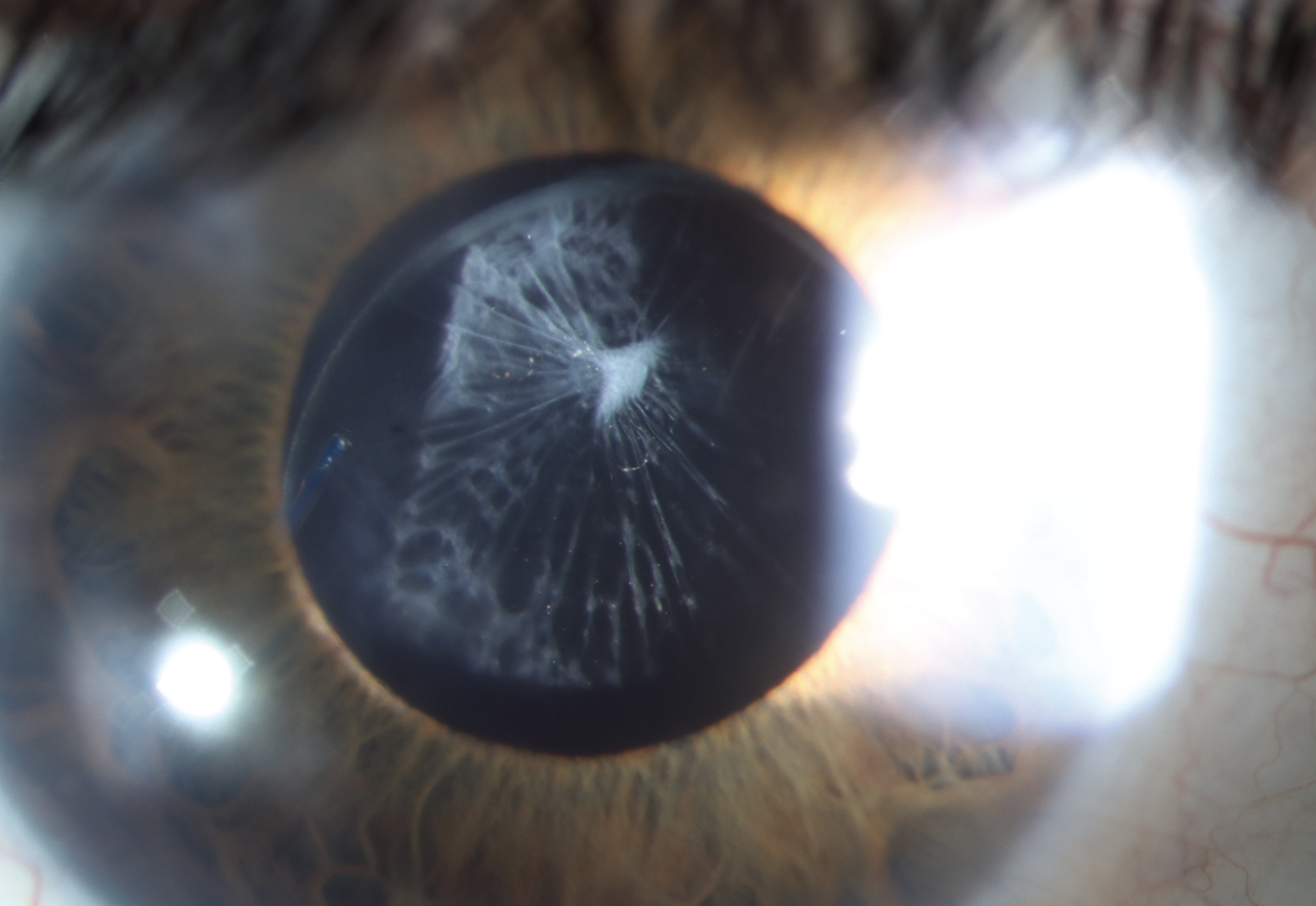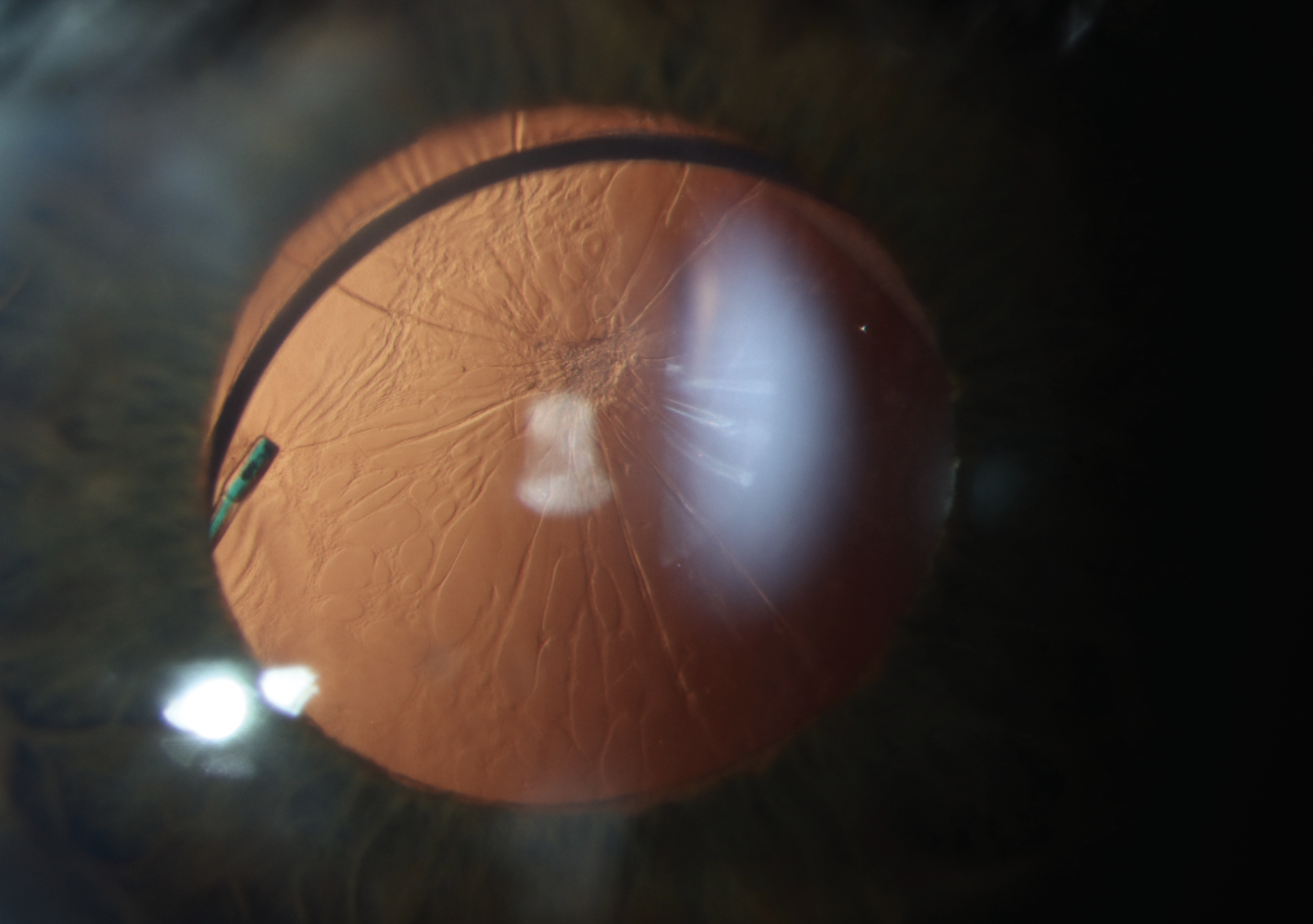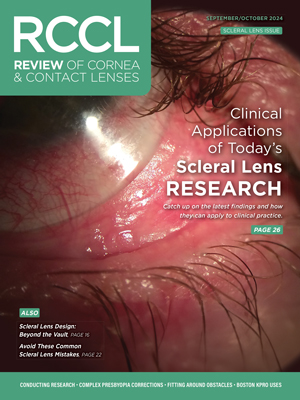 |
A 45-year-old woman with a highly myopic eye with posterior staphyloma, glaucoma and keratoconic corneas presented for evaluation to improve vision. Upon exam, 4+ posterior cortical cataract with 2+ posterior subcapsular cataract was noted in both eyes; she was referred for retina evaluation and cataract surgery.
During surgery, it was discovered that she had posterior polar cataracts (PPC); however, the surgery remained uncomplicated and an IOL was placed in the bag. On follow up for contact lens fitting, it was noted her IOL was decentered inferior nasal and there was dense posterior fibrosis with contraction of the capsule. It was determined that nd:YAG laser was contraindicated secondary to zonular dehiscence, her poorly controlled IOP and the risk of retinal detachment. Her best scleral lens corrected vision is 20/40.
 |
|
Click image to enlarge. |
PPC is thought to be an autosomal dominant congenital cataract arising from hyaloid artery persistence or lenticular invasion by mesoblastic tissue.1 Positive family history has been reported in about 40% to 50%, with an incidence of three to five per 1000.2 It is bilateral in 65% to 85% of cases, with male:female ratio equal. There are associations of PPC with retinitis pigmentosa, Wilms tumor, aniridia, anterior polar cataract, microcornea and microphthalmia, as well as dermal conditions such as scleroderma, ectodermal dysplasia, Rothmund syndrome and dyskeratosis congenita.
 |
| CAPTION Click image to enlarge. |
PPC is densely adherent to the posterior capsule, making it weak and increasing the odds of posterior capsular rupture during surgery. In this case, it was felt the PPC plaque was densely attached to the posterior capsule and the surgeon should not dissect it by viscodissection. The risk of posterior capsular breach includes vitreous prolapse into the anterior chamber, nucleus drop and failure to implant IOL due to lack of capsular support. Our patient remains unhappy with her final vision, despite a positive surgical outcome.
1. Gurnani B, Kaur K. Posterior Polar Cataract [Updated 2023 Jun 11]. In: StatPearls. Treasure Island: StatPearls Publishing; 2024 Jan. Available from www.ncbi.nlm.nih.gov/books/NBK574549. 2. Osher RH, Yu BC, Koch DD. Posterior polar cataracts: a predisposition to intraoperative posterior capsular rupture. J Cataract Refract Surg. 1990 Mar;16(2):157-62. |


